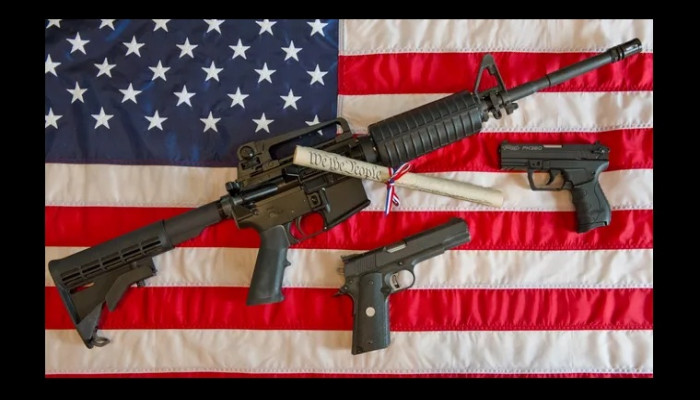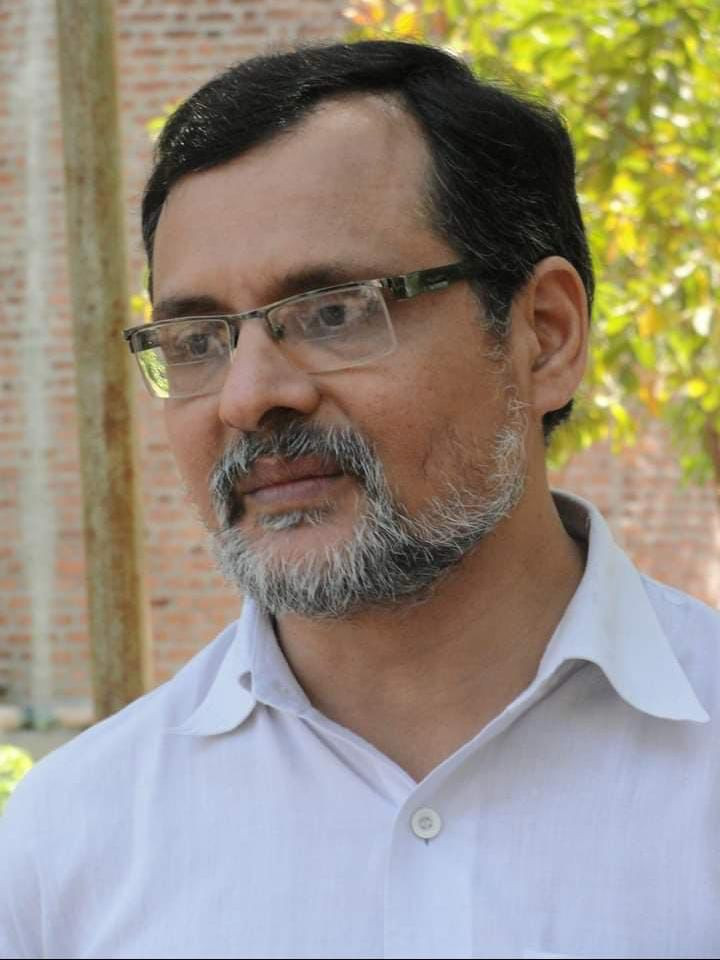‘Gun Rights’ versus ‘Gun Culture’: The Reality of Firearms in American Life and Beyond
- In Current Affairs
- 11:24 AM, Sep 18, 2025
- Viren S Doshi
Interesting Discourse on Matured Democratic Statecraft
Overview
The debate over firearms in the United States is a complex interplay of constitutional rights, cultural traditions, political divides, and historical contexts, often framed as a tension between "gun rights" and "gun culture."
This article explores the day-to-day reality of gun ownership in America, addressing concerns about accessibility, the Second Amendment of the United States Constitution, political polarisation, and historical as well as global perspectives in light of terrorist and other violent threats in democracies. It also contrasts the American experience with the Hindu perspective on weapons and examines global contexts, including India’s historical and modern relationship with civilian arms. Salwa Judum was one of the Indian civilian experiments to counter leftist violence in Chhattisgarh. It also looks into the Chinese Communist Party (CCP)-occupied China’s perspective on civilians and guns.
Additionally, it highlights stories of self-defence and examines the broader implications of gun ownership, including its historical roots and contemporary challenges.
Recent tragic events—such as the fatal shooting of conservative activist Charlie Kirk and a surge in mass shootings—have amplified these discussions.
“Gun Rights” and “Gun Culture” in the United States
In the United States, firearms are deeply embedded in both legal frameworks and cultural identity. The Second Amendment, ratified in 1791 as part of the Bill of Rights, states, "A well-regulated Militia, being necessary to the security of a free State, the right of the people to keep and bear Arms, shall not be infringed." This constitutional provision underpins the legal right to own firearms, while the term "gun culture" reflects a societal relationship with guns shaped by certain trends based on rhetoric.
Day-to-Day Reality of Firearms in America
With an estimated 300 million firearms in civilian hands — nearly one per person — the United States has the highest per capita gun ownership rate in the world. Guns are part of everyday life for millions, particularly in rural areas where hunting and sport shooting are common activities and self-defence is still a common phenomenon. In urban settings, firearms are often associated with self-protection amid concerns about crime, though they also contribute to violence, particularly from the section of illegal immigrants and woke or Jihadi elements.
As the saying goes, "It is not the gun that fires, it is the hand on the trigger that fires, it is the heart and the head behind the hand that fires." This underscores that the intent and mental state of the individual, not the mere presence of a firearm, drive its use—whether for protection or harm.
Conservative activist Charlie Kirk, whose tragic loss has reignited this debate, emphasised the trade-offs of an armed citizenry, stating, “Having an armed citizenry comes with a price, and that is part of liberty… I think it’s worth it to have a cost of, unfortunately, some gun deaths every single year so that we can have the Second Amendment to protect our other God-given rights.” Kirk’s perspective (analogous to driving and vehicles and related intentional or accidental fatalities) highlights the reality that gun ownership, like driving—which claims approximately 50,000 lives annually in the U.S.—involves a societal cost. He argued that gun deaths cannot be eliminated entirely in a free society, but practical measures, such as armed guards at schools or stronger family structures, could reduce violence without utopian expectations. Addressing gun violence, therefore, requires focusing on human factors like mental health and societal conditions as much as on the tools themselves.
As of September 2025, the U.S. faces persistent gun violence, with the Gun Violence Archive reporting over 300 mass shootings year-to-date, resulting in 302 deaths and 1,354 injuries by late August. Recent incidents, including a school shooting in Colorado on September 10 that left multiple victims, highlight the sporadic nature of gun violence, even as overall rates have declined from a 30% surge in 2020.
Federal and state responses remain polarised: President Trump's February 2025 executive order mandates reviews of firearm regulations to bolster Second Amendment protections, potentially challenging laws like felon-in-possession statutes, while critics warn it could exacerbate violence. Meanwhile, over a dozen states have enacted gun safety measures in 2025, such as Minnesota's binary trigger ban (effective January 1) and expanded extreme risk protection orders, though expansions in states like New Hampshire (e.g., prohibiting employer bans on locked-vehicle gun storage) continue to broaden rights.
Concerns about accessibility, particularly for children or those with mental health issues, are valid but nuanced. Federal law requires background checks through the National Instant Criminal Background Check System (NICS) for purchases from licensed dealers. However, gaps exist: private sales in some states do not require checks, and enforcement varies. The Brady Handgun Violence Prevention Act of 1993 mandates background checks, but critics argue that loopholes, such as gun show sales or inadequate mental health reporting, allow prohibited individuals to acquire weapons. Data from the Federal Bureau of Investigation (FBI) shows that in 2024, over 30 million background checks were processed, with roughly 1% denied due to criminal history or other disqualifications. While this suggests a functional system, high-profile cases of mass shootings by individuals with mental health issues, out of wokeist propaganda, fuel scepticism about its efficacy. In 2025, court rulings like the Fifth Circuit's decision affirming gun rights for marijuana users have further complicated enforcement.
The National Rifle Association (NRA), with millions of members and substantial funding, advocates for expansive gun rights, framing them as essential to individual liberty and self-defence. Critics argue this influence stifles reform, pointing to the NRA’s financial contributions to political campaigns, primarily supporting Republicans. However, gun control advocacy groups, like Everytown for Gun Safety, also wield influence, often aligning with Democrats. Project 2025 proposals, which aim to invalidate state concealed carry restrictions and defund violence prevention offices, have drawn sharp criticism from leftist propagandists.
The Second Amendment: Logic, History, and Justification
The Second Amendment’s origins lie in the American Revolution, when militias composed of armed citizens were crucial to resisting British rule. The Founding Fathers, wary of centralised power, saw an armed populace as a check against tyranny. Philosophers like John Locke influenced this view, emphasising the right to self-preservation. Charlie Kirk articulated this principle, stating, “The Second Amendment is there, God forbid, so that you can defend yourself against a tyrannical government… If that talk scares you, you have not read any 20th-century history.” He argued that historical examples of tyrannical regimes underscore the need for an armed citizenry, a view rooted in the Founders’ scepticism of unchecked power.
The amendment’s reference to a "well-regulated Militia" reflects the era’s reliance on citizen-soldiers, while the broader "right of the people" extends to individual ownership, as affirmed by the Supreme Court in District of Columbia v. Heller (2008). Recent 2025 developments, including challenges to state laws post-Bruen (2022), continue to expand interpretations favouring rights, such as rulings against restrictions for young adults or certain misdemeanants.
Historically, firearms were essential in a frontier society. Settlers used guns to protect against threats, including conflicts with Native Americans, and to sustain themselves through hunting. Rural areas spread over vast regions with limited law enforcement relied on self-help, embedding firearms in American identity.
Today, justifications for gun ownership include self-defence, recreation, and safeguarding against potential government overreach. Critics argue that modern militias are obsolete given professional military and police forces.
Political Polarisation: Republicans, Democrats, and Guns
The gun debate is sharply polarised. Republicans generally support expansive gun rights, viewing the Second Amendment as a cornerstone of individual liberty and a bulwark against state tyranny and terrorism. They argue that law-abiding citizens should not be penalised for the actions of criminals and emphasise personal responsibility. Democrats, conversely, advocate for stricter regulations, citing gun violence statistics—over 40,000 gun deaths annually, including homicides, suicides, and accidents, per the Centres for Disease Control and Prevention (CDC). They argue that common-sense reforms, like universal background checks or assault weapon bans, would save lives without infringing constitutional rights. In 2025, this divide has deepened with Trump's pro-gun executive actions and Republican majorities blocking federal reforms, while Democratic-led states advance safety laws.
This divide is not absolute. Some Democrats support gun ownership, particularly in rural areas, while some Republicans endorse limited reforms. However, political rhetoric often amplifies extremes, with gun control serving as a fundraising and mobilisation tool for both sides. The tragic loss of Charlie Kirk—fatally shot on September 10, 2025, during his "American Comeback Tour" at Utah Valley University, in what authorities describe as a targeted sniper attack from a rooftop—underscores the human cost of violence, prompting calls for reflection on both rights and responsibilities.
Stories of Self-Defence
Proponents of gun rights highlight cases where firearms save lives. For example, a 2022 incident in West Virginia involved a woman using a legally owned firearm to stop an active shooter at a graduation party, preventing a potential massacre. The NRA and other groups compile such stories, estimating millions of defensive gun uses annually, though exact numbers are debated due to varying methodologies. A 1995 study by criminologist Gary Kleck suggested 2.5 million defensive gun uses per year, while critics argue the figure is inflated. These stories counterbalance narratives of gun violence, illustrating why many Americans view firearms as essential for personal security.
Conversely, recent tragedies underscore the vulnerabilities faced by unarmed individuals, even in everyday settings. On September 10, 2025, Chandra Mouli "Bob" Nagamallaiah, a 50-year-old Indian-origin motel manager in Dallas, Texas, was stabbed and beheaded with a machete by an illegal immigrant, Yordanis Cobos-Martinez, who happened to be a hardened criminal. The attack occurred in front of Nagamallaiah's wife and 18-year-old son, who desperately tried to intervene but were unable to stop the assailant.
Cobos-Martinez, a Cuban illegal immigrant with a prior criminal record (including carjacking and assault convictions), was arrested nearby, covered in blood and still armed; he allegedly kicked the severed head into the parking lot before discarding it in a dumpster and has been charged with capital murder. President Trump condemned the incident, vowing stricter measures against "illegal immigrant criminals." Had Nagamallaiah been armed, as permitted under his Second Amendment rights, he might have been able to defend himself and protect his family from this horrific outcome. This incident highlights a broader concern: communities like Indian Americans and Hindu Americans, often recognised as among the most law-abiding and dedicated in the U.S., may possess the fewest firearms and thus become soft targets for violence.
Proponents of gun rights argue that such groups, in particular, should exercise their constitutional protections by arming themselves responsibly for self-defence, especially in high-risk professions like motel management, where immediate threats can arise without warning. Nagamallaiah's funeral on September 13 drew the Indian community, emphasising calls for enhanced personal security.
Historical Trends and Gun Violence
Interestingly, gun violence in America has not always correlated with ownership rates. In the mid-20th century, gun ownership was widespread, yet mass shootings were rare. Factors like cultural shifts, “violent” wokeist leftist propaganda, mental health challenges, and socioeconomic disparities may contribute more to modern violence than sheer availability. For instance, the 1990s saw higher homicide rates than today, despite fewer guns per capita. This suggests that addressing root causes—poverty, mental health, gang activity, leftist propaganda —may be as critical as regulating firearms.
In 2025, with 146 school-related gun incidents year-to-date and events like the Colorado shooting, trends show a slight decline from 2020 peaks with persistent challenges, prompting renewed pushes for balanced reforms.
Hindu Perspective on Weapons
In Hindu philosophy, weapons (shastr) are not inherently evil but must be wielded with wisdom derived from scripture (shastra). The Bhagavad Gita emphasises dharma-guided action, where arms are justified in a Dharma-yuddha—a righteous war to uphold justice. Devas (divine beings) use weapons to protect cosmic order, while Asuras (demonic forces) misuse them for chaos. For humans (Manavas), weapons are a last resort, guided by restraint and moral purpose. This ideal is epitomised in the Mahabharata, particularly in descriptions of Parashurama (the sixth avatar of Vishnu), with the verse:
"Agratah chaturo vedah prushtatah sasharam dhanuh |
Idam brahmam idam kshatram shapadapi sharadapi ||"
In front, the four Vedas; behind, the bow charged with arrows. This is the Brahman, this is the Kshatra; by curse or by arrow.
This symbolises the perfect fusion of scholarly knowledge (Brahmin essence) and warrior valour (Kshatriya essence), where one vanquishes evil through wisdom or force, as Parashurama did in eradicating evil.
Historically, India’s relationship with arms reflects both valour and caution. The British Indian Arms Act of 1878 disarmed much of the population post-1857 rebellion, consolidating colonial control. Earlier, the Marathas and Sikhs, formidable powers in the 18th century, struggled to adopt modern weaponry, as seen in the Third Battle of Panipat (1761). Their reliance on traditional arms against more advanced forces contributed to British dominance. Post-independence, India’s strict gun laws have limited civilian ownership, arguably aiding stability by curbing internal threats like Naxalism and terrorism. But an experiment like Salwa Judum helped a lot in the Naxalite-infested Chhattisgarh. However, this deweaponization contrasts with the United States, where an armed populace is seen as a check on state power, echoing the Mahabharata's balanced ideal of wisdom and weaponry.
Global Perspectives: CCP-Occupied China and Beyond
In CCP-occupied China, civilian gun ownership is virtually nonexistent. The Firearms Control Law bans private possession, reflecting the regime’s prioritisation of state control over individual rights. This contrasts starkly with the United States, where guns symbolise personal freedom. Communist China’s approach minimises gun violence but eliminates self-defence options, leaving citizens reliant on monolithic state protection—a trade-off unacceptable to Americans.
In other nations, approaches vary. Switzerland combines high gun ownership with strict regulation and low violence, emphasising training and civic responsibility. Australia’s 1996 buyback reduced gun suicides and homicides but did not eliminate ownership, balancing rights and safety. These models suggest that culture and governance shape outcomes as much as laws.
Conclusion: Reconciling Rights and Realities
The United States’ gun rights are inseparable from its history and constitutional framework; it faces modern challenges of violence and polarisation, exacerbated by 2025 events like the Kirk assassination and ongoing mass shootings.
The Second Amendment enshrines a right born of necessity, but its application in a society with 300 million firearms raises questions. Stories of self-defence highlight the practical value of guns, while tragedies like mass shootings and the loss of figures like Charlie Kirk underscore the need for solutions that respect both rights and safety.
From a Hindu perspective, weapons demand wisdom and restraint—as in the Mahabharata's verse on Vedic knowledge and armed resolve—a principle that could inform American debates.
Globally, contrasting models like CCP-occupied China’s total ban or Switzerland’s regulated ownership offer lessons but no perfect template.
Ultimately, addressing gun violence requires tackling root causes — Wokeism, Leftist radical propaganda, mental health, inequality, and cultural divides — while respecting the constitutional and historical realities that make firearms a fixture of American life, amid 2025's legislative pushes for both safety and expansion.
Only through such reflection can the nation honour both its freedoms and its fallen.
Disclaimer: The opinions expressed within this article are the personal opinions of the author. MyIndMakers is not responsible for the accuracy, completeness, suitability, or validity of any information on this article. All information is provided on an as-is basis. The information, facts or opinions appearing in the article do not reflect the views of MyindMakers and it does not assume any responsibility or liability for the same.







Comments